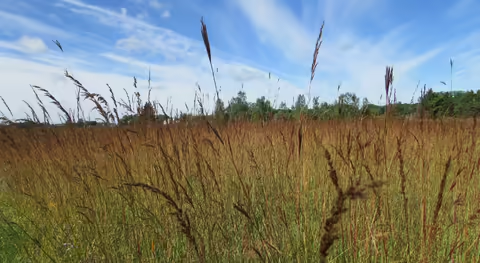One of Illinois' favorites for median strips.
The blue-green foliage is topped with golden-orange panicles of smooth, soft spikelets. Indian Grass (Sorghastrum nutans) has so many distinctive characteristics. Let’s take a look.
Range and habitat
Indian Grass is very common in Illinois, occurring in all 102 counties. It is one of the three dominant prairie grasses iconic of the tallgrass prairie ecosystem. Besides prairies, you can find it in savannas and along roadsides.
Height and growth habit
Indian Grass typically grows between 5 and 7 feet tall. Its height is one way to start to distinguish it from other grasses. As mentioned above, when you see a big clump of it growing, the blue-green hue of the stems and leaves is apparent, standing out from the brighter or deeper true greens of other grasses. It is a bunchgrass, growing in tight bunches, yet when growing in a monoculture, the bunch form is hard to detect.
A grass with horns
Indian Grass is unique in that it has a feature called horns in the collar region where the leaf blade wraps around the stem to form a sheath. Horns are stiff plant material extending up from the leaf sheath. It’s a bit easier to see the horns when looking at the stem from a side view, but can also be seen when you pull the leaf blade back from the stem. You can also look for a membranous ligule and hairy nodes along the stem.
Flowers ready for fall
You know fall is coming when the Indian Grass starts to bloom, as it starts to show some fall color. It produces a panicle inflorescence with more contracted branches than the typical open, airy panicle shape. Awned spikelets are orange to golden and covered in silky hairs. If you catch it in bloom, you can see yellow anthers exserted from the spikelets that dance in the wind.
Need a refresher on grass identification terms, like ligule and spikelet? Check out this blog post!
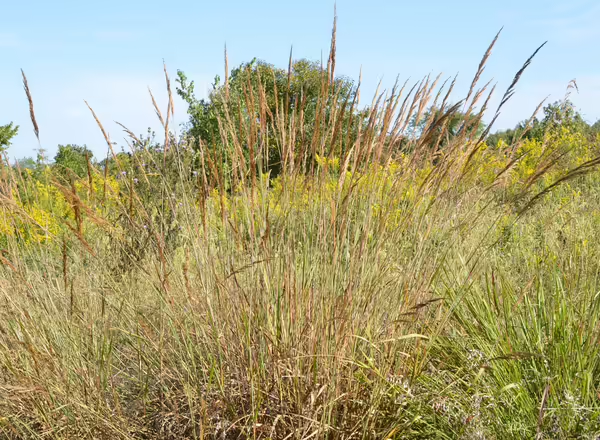
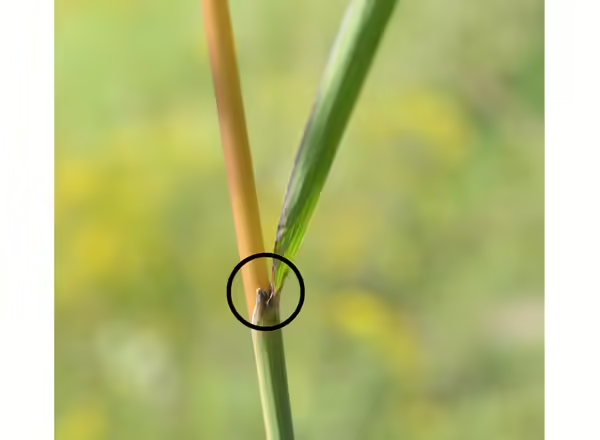
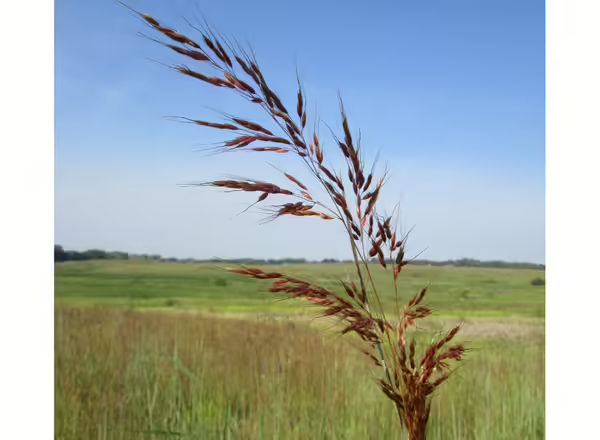
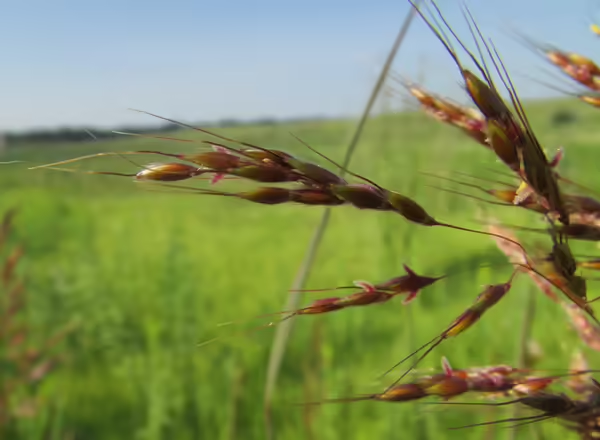
Indian Grass, Sorghastrum nutans, is a native, warm season grass of the tallgrass prairie. It is a robust bunchgrass that can grow between four and seven feet tall. Its stems are blue-green in color which can make it stand out from the surrounding foliage, and the leaves are over a foot...
